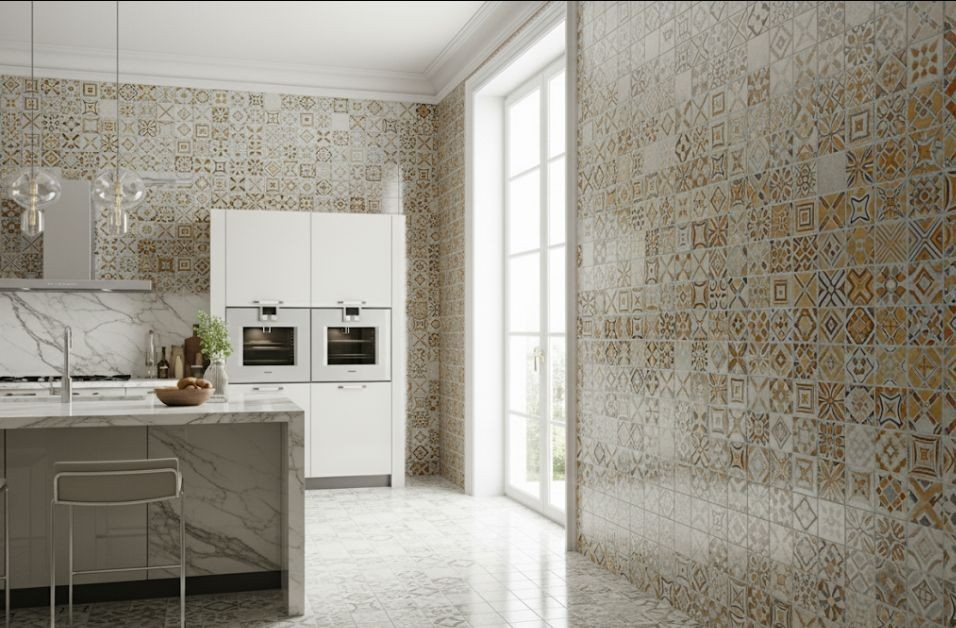Italian ceramic tiles are celebrated for their exquisite blend of style and durability, making them a preferred choice for homeowners looking to elevate their interiors. Their craftsmanship ensures versatility across various spaces, but choosing between wall and floor tiles requires understanding their distinct roles to achieve both aesthetic appeal and functionality.
Wall vs. Floor Tiles: Core Differences
The primary distinction between wall and floor tiles lies in their construction and purpose. Floor tiles are engineered for resilience, designed to withstand heavy foot traffic, furniture weight, and occasional impacts. They undergo rigorous testing for slip resistance and durability to endure daily wear.
Wall tiles, by contrast, prioritize aesthetics. They’re lighter, thinner, and often feature glossy or decorative finishes that enhance a room’s visual appeal. While ideal for vertical surfaces, they lack the toughness to handle floor use, where they could crack or wear out quickly.
In essence, walls are for creative expression, while floors demand strength.
Why Italian Ceramic Tiles Stand Out
Italian ceramic tiles excel due to their meticulous production process. Fired at high temperatures, they achieve a dense, water-resistant structure, making them suitable for both walls and floors. Advanced glazing techniques deliver a luxurious yet practical finish, resisting stains and scratches.
Their design versatility is a major strength. Italian ceramic tiles offer options from realistic marble and wood textures to bold, artistic patterns, catering to diverse tastes. Whether you’re tiling a bathroom wall or a kitchen floor, these tiles combine beauty with practicality.
Wall Tiles: Focusing on Style
Walls provide a canvas for creativity. Italian ceramic wall tiles often feature glossy, light-reflective surfaces that brighten spaces, making them feel larger and more inviting. Large-format tiles are increasingly popular, reducing grout lines for a sleek, modern aesthetic.
In kitchens, Italian ceramic tiles make excellent backsplashes, resisting spills, heat, and stains while being easy to clean. In bathrooms, they create a serene, spa-like atmosphere, especially when paired with soft lighting. However, their delicate construction makes them prone to chipping if struck, so they’re best suited for vertical surfaces.
Floor Tiles: Built for Durability
Floors face constant wear—footsteps, furniture movement, and spills are daily challenges. Italian ceramic floor tiles are designed to meet these demands. Thicker and stronger, they often feature textured surfaces for improved grip, ideal for wet areas like bathrooms or outdoor patios.
Matte finishes are preferred for floors, as they conceal dirt and scratches better than glossy surfaces. Italian ceramic tiles also come with slip-resistance ratings, crucial for safety in high-traffic zones. Neutral tones like grey, beige, or stone are practical, maintaining a clean look over time.
Can Floor Tiles Work on Walls?
Using floor tiles on walls is a popular design choice. Italian ceramic floor tiles can create a cohesive, contemporary look when extended to vertical surfaces. The challenge is their weight—walls must be structurally sound to support heavier tiles.
However, using wall tiles on floors is risky. Their thinner build can’t withstand foot traffic, leading to cracks or slippery surfaces. This mistake often results in costly repairs, so it’s best to stick to their intended use.
Common Mistakes to Avoid
A frequent error is choosing tiles based solely on appearance. A glossy Italian ceramic wall tile may look stunning, but on a floor, it could become a slip hazard. Another oversight is neglecting maintenance—grout lines on floors trap dirt, so larger tiles with fewer joints simplify cleaning.
Mismatching styles can also disrupt a room’s harmony. Pairing bold wall and floor patterns can feel overwhelming. For balance, pair a decorative wall tile with a neutral floor, or keep walls simple if the floor has a striking design.
Matching Tiles to Your Space
Each space has unique needs:
- Bathrooms: Glossy Italian ceramic wall tiles enhance brightness, while textured floor tiles ensure safety. Marble-look tiles are a popular choice.
- Kitchens: Durable, stain-resistant floor tiles pair well with decorative backsplash tiles. Italian ceramic tiles mimicking stone or concrete are trending.
- Living Rooms: Large-format Italian ceramic tiles offer a modern alternative to wood flooring, complemented by neutral wall finishes.
- Outdoor Areas: Slip-resistant, frost-proof Italian ceramic floor tiles are ideal for patios, with matching wall tiles for a unified look.
Current Design Trends
Oversized Italian ceramic tiles, sometimes exceeding three meters, are trending for their seamless, grout-free aesthetic. Wood-look tiles combine the warmth of timber with ceramic durability, while using the same tile for walls and floors creates a tranquil, cohesive space, particularly in bathrooms.
The Long-Term Value of Italian Ceramic Tiles
Italian ceramic tiles may have a higher initial cost, but their durability and timeless designs make them a smart investment. They resist wear, reducing replacement needs, and their classic appeal ensures spaces remain stylish for years. Proper placement is critical—using wall tiles on floors or unsupported floor tiles on walls can undermine their value.
Final Thoughts
Choosing between wall and floor tiles is about balancing aesthetics with function. Italian ceramic tiles offer exceptional options for both, but their success depends on correct application. Walls invite creativity, while floors require durability and safety. By prioritizing practical needs and consulting tile professionals when needed, you can create spaces that are both beautiful and built to last.



